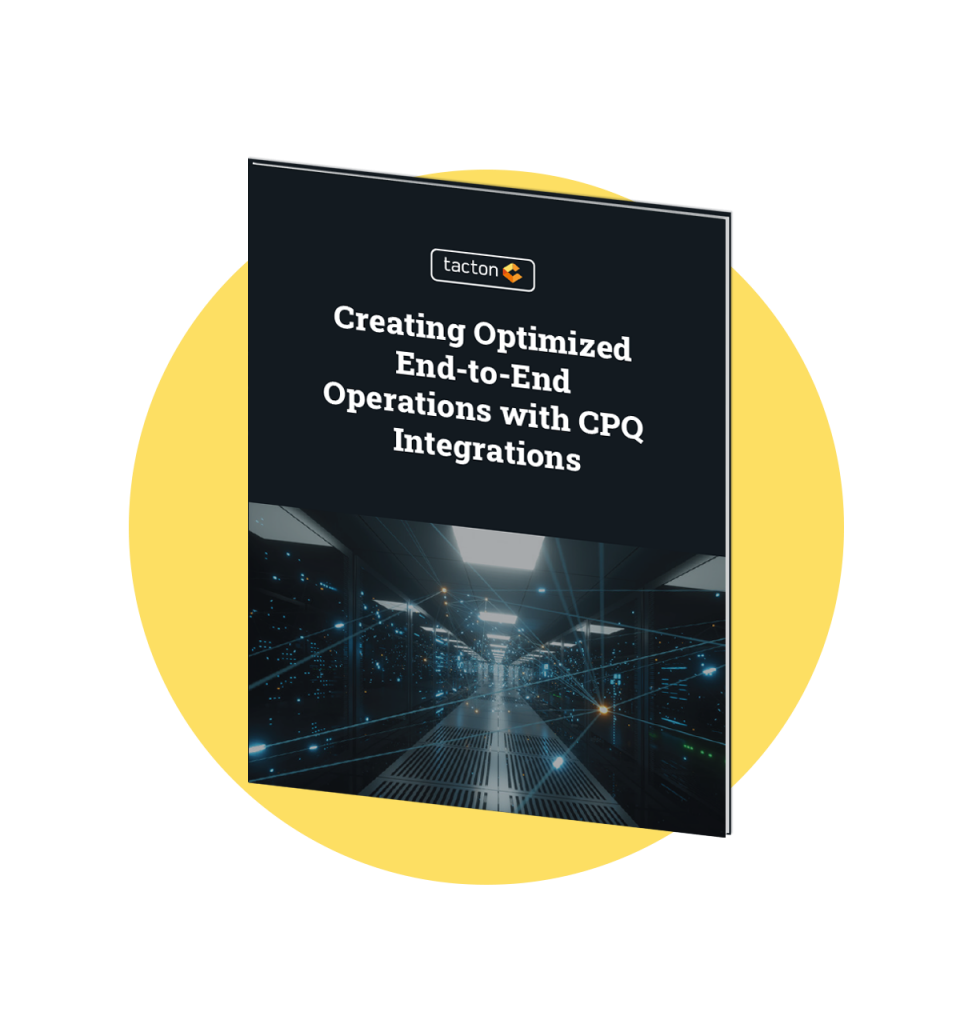What is CPQ?
Configure-Price-Quote (CPQ) solutions allow your sales reps and partners to define and price complex industrial equipment that is not just buildable and valid, but also profitable. Easy configuration, instant pricing, and fewer errors in quoting and ordering, make the buying and selling journey less bumpy, and less reliant on manual one-offs by your sales engineering department.
The New Product Development Process
The New Product Development (NPD) is the process by which manufacturers bring or renew a product – and all its variants – to the market or introduce a product in a new market. This involves not only product development in the R&D department, but also ensuring the new features can be manufactured profitably and effectively in the supply chain. It also covers the process of pricing and bringing the features into the sales tools and channels of your direct sales, partner sales, and customer self-service. The NPD ensures that the transactional Quote-to-Cash or Sales & Order Fulfilment process – including your CPQ front-office sales tools – has the right data at its disposal to create accurate quotes, orders, and deliverables. If you do not get that process right, your sales reps will end up selling custom products that your factories are unable to produce, that are incorrectly priced or that simply fail to fulfill what you promised the customer.

CPQ Integrations
Your CPQ’s powerful configuration and pricing engines allow you to create a shared product definition considering aspects from all parts of your organization, including product limitations and variance, commercial rules, compliance regulations, customer needs, and order fulfillment. To maximize the quality of quotes and orders, and to make the customer journey fast and flawless, CPQ brings together and leverages master data from your surrounding enterprise systems. Let’s see what data types and systems Tacton’s CPQ customers typically integrate with.
Tacton CPQ Integrations in the New Product Development process.
Product Lifecycle Management systems (PLM)
In the PLM and connected CAD systems, your R&D department defines the product architecture, the structure, and the parts needed to fulfill the output and performance expected for the product. It also encompasses the different module and part variants needed to be able to customize and tailor the product line to different customer needs (often called Super BOM or 150% BOM).
To generate valid configurations, the configurator needs to mirror that data (and then of course add other commercial rules and constraints on top of that). With the help of Tacton CPQ’s API for Administration, the product set-up and changes in your PLM can be reflected in Tacton continuously. When the structure, module variants, and interfaces in Tacton Product Modelling always map to your PLM, your sales reps will only configure accurate and up-to-date solutions selling your newest and finest product features and options.
If your PLM has volatile product data – for instance constantly changing parts – you may consider using Tacton CPQ’s Data Import Automation feature. Using the API for Administration, you need to collect the changes and make releases into the front-office sales tool, but with Data Import Automation the master data from your PLM are made directly available to your sales reps’ fingertips (after passing through proper data validation schemas). This means more agility and fewer order errors.
Price management systems
In your CPQ you define the price execution rules and waterfalls for your products, segments, and channels. However, the price and costing data– base prices and production costs – are for many manufacturing companies stored in dedicated price management systems or in the ERP. Both pricing and costing data may fluctuate often, due to material costs, production costs, inventory levels, shifting market demands, etc. To protect your deal margins, it is important to stay agile and react fast to such disruptions.
With Tacton CPQ’s API for Price Data and API for Costing Data, you can continuously pull in data from your price management systems, ensuring that any configured product that your sales rep quotes, gets the correct margin calculation, and that it will stay profitable all through the order fulfillment process. In Tacton CPQ you could also use this data to optimize your configurations: among all the product variants that fulfill the customer needs, let the configurator pick the variant with the highest margin.
Again, if your cost data is volatile – for instance currency rates or raw material costs – you may consider using the Data Import Automation feature to maximize speed and reduce the maintenance costs.
Product Information Management systems (PIM)
PIMs are typically used by companies selling standard products, storing images, tech specs, and value propositions for each. With configured products that are less relevant, since those aspects will vary across the millions of valid products variants your product model is able to generate. However, on part and module variant level, those descriptions and images may still be relevant for configured equipment. Also, although Tacton CPQ focuses on configurable products, you can add accessory line items from a standard product catalog to complement the configured products.
In these cases, the ways in which your modules, parts, and catalog items are presented in the sales tools and quotes should use the data you have already mastered in your PIM. With Tacton CPQ’s API for Administration, this is fully achievable, leveraging your PIM investment and minimizing data maintenance costs.
Enterprise Resource Planning systems (ERP)
There is important order fulfillment data in your ERP that are crucial for a smooth selling and buying journey with CPQ. Your suppliers and the parts that they produce may come and go, due to quality issues, supplier changes, etc. These disruptions are often and hopefully synced between the ERP and the PLM so if you have a PLM integration in place, the CPQ will receive those updates from there.
However, ERP also holds data about delivery times, stock levels, shipping, and so on. When buying industrial equipment delivery times are often essential. If the CPQ has that data – already at the time of the quote – the configurator may be able to select a product variant that has the shortest delivery time and at the same time meets the customer needs.
In Tacton CPQ’s API for Product Modeling or Data Import Automation, any business-critical parameter from your ERP can be pulled into your product model in Tacton CPQ, driving the selection of products variants based on customer’s purchasing drivers. This means that your sales rep can give immediate answers to a prospect about delivery times for every configured product variant, shortening the sales cycles. In this way, your order fulfillment organization stands in a much better position to deliver on the promises in the quote.
If you have separate ERPs for your subscription-based services, Tacton CPQs API for Subscription pricing allows you to pull in product and recurring prices for those. In Tacton CPQ you can set up logic that selects the optimal services depending on the configured product, maximizing the business value for the customer and minimizing the total cost-of-ownership.
Interested in learning more?
Check out our Integrations eBook or schedule your demo today!
This piece was written by Tacton’s Senior Product Marketing Manager Per Rohdin.



